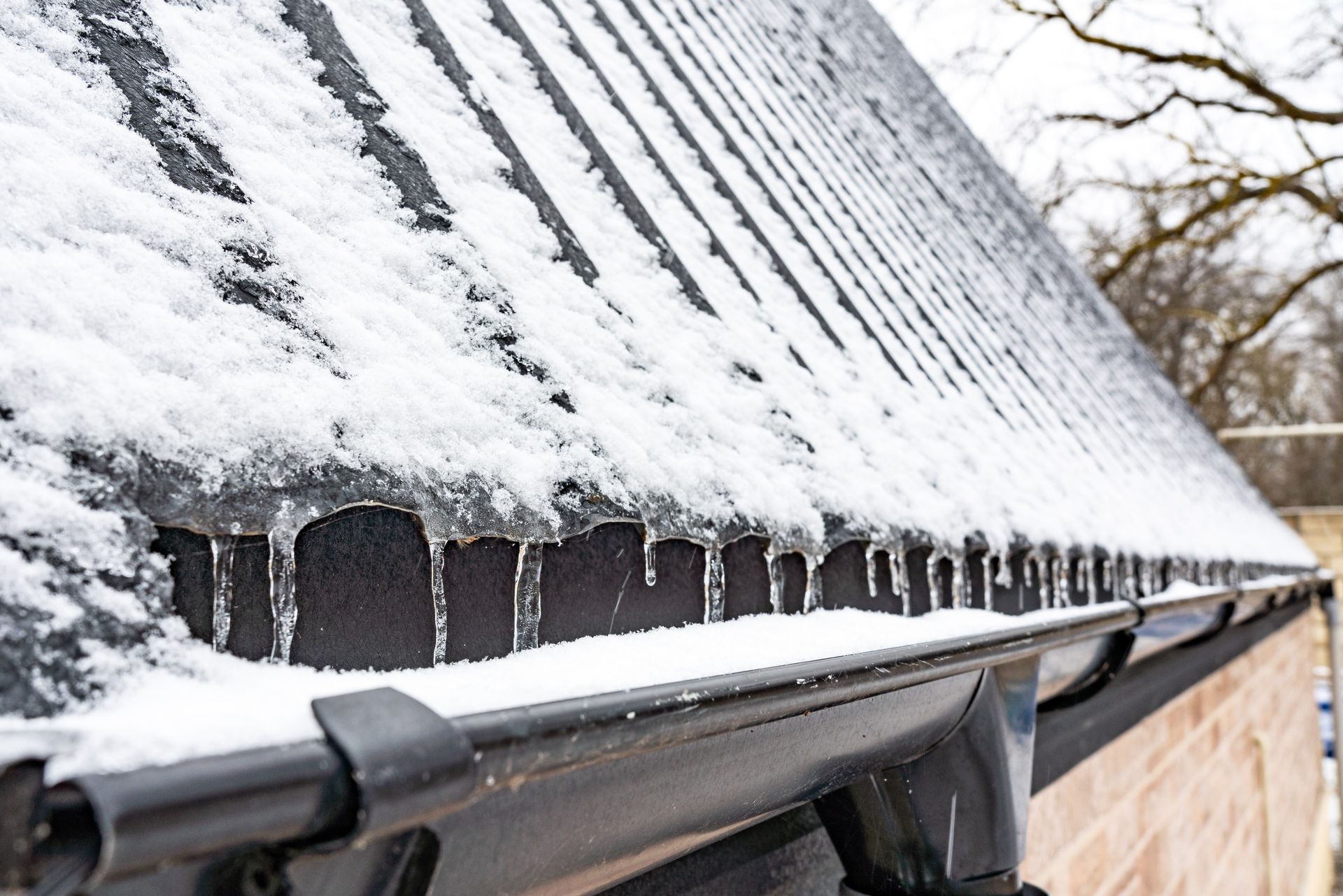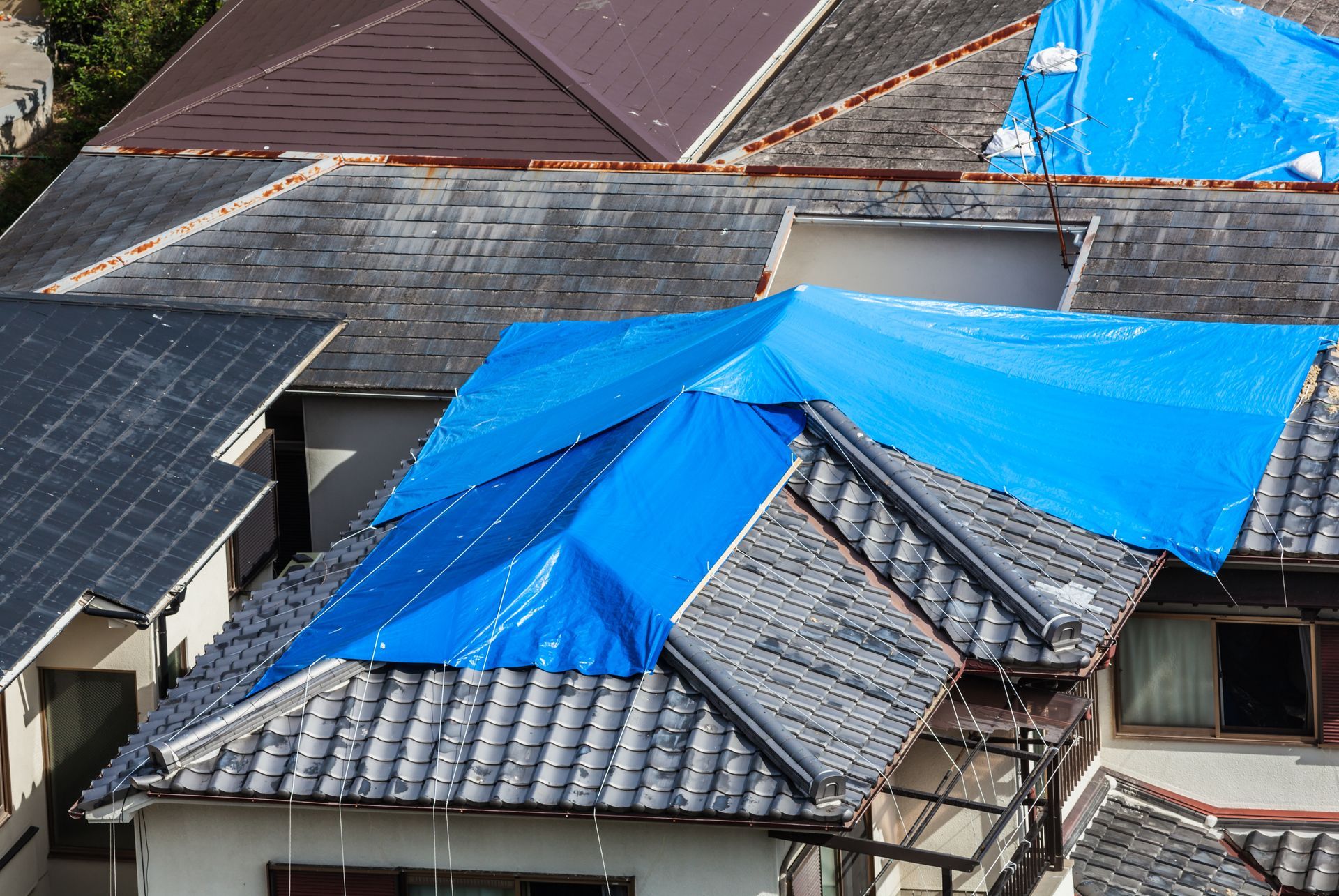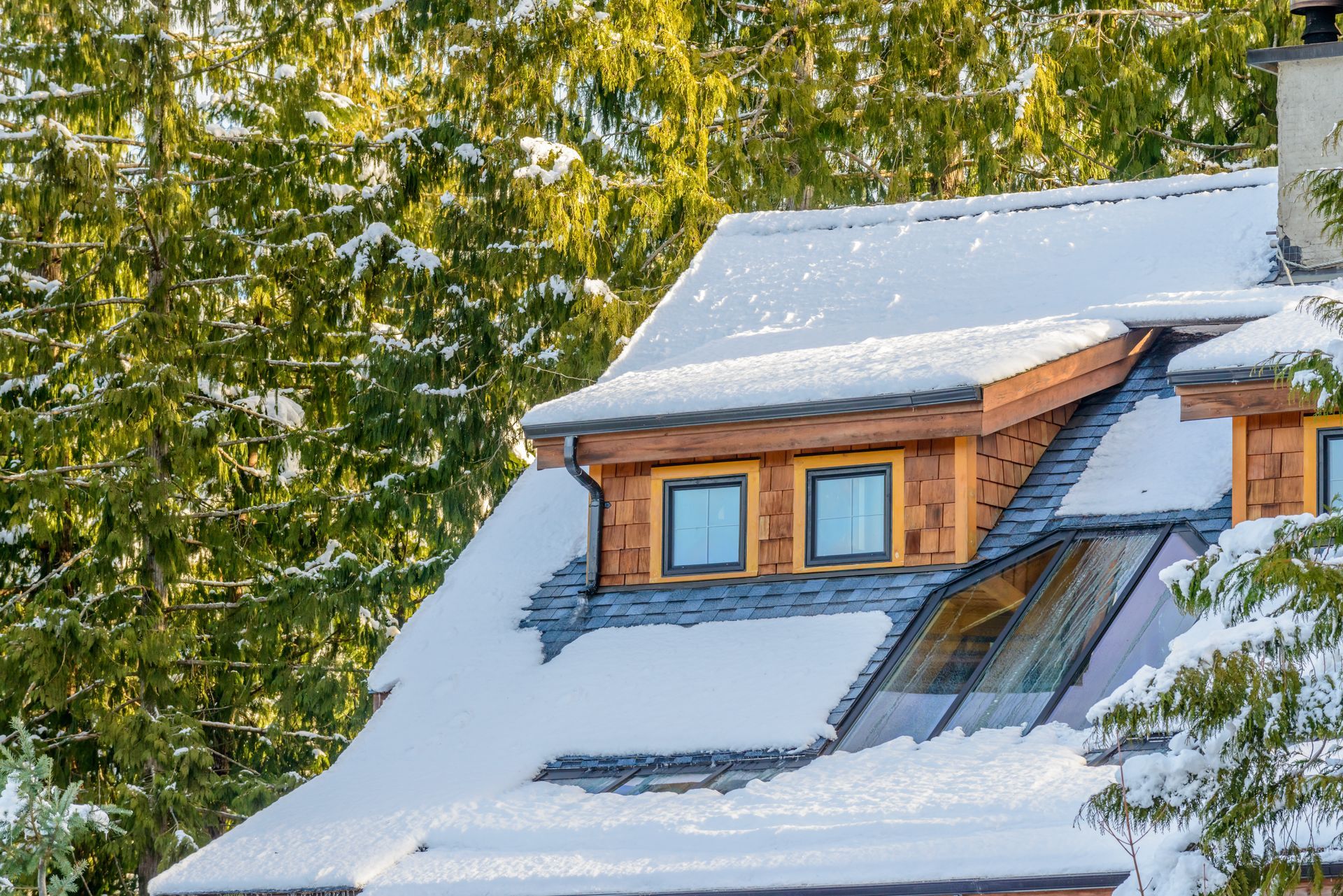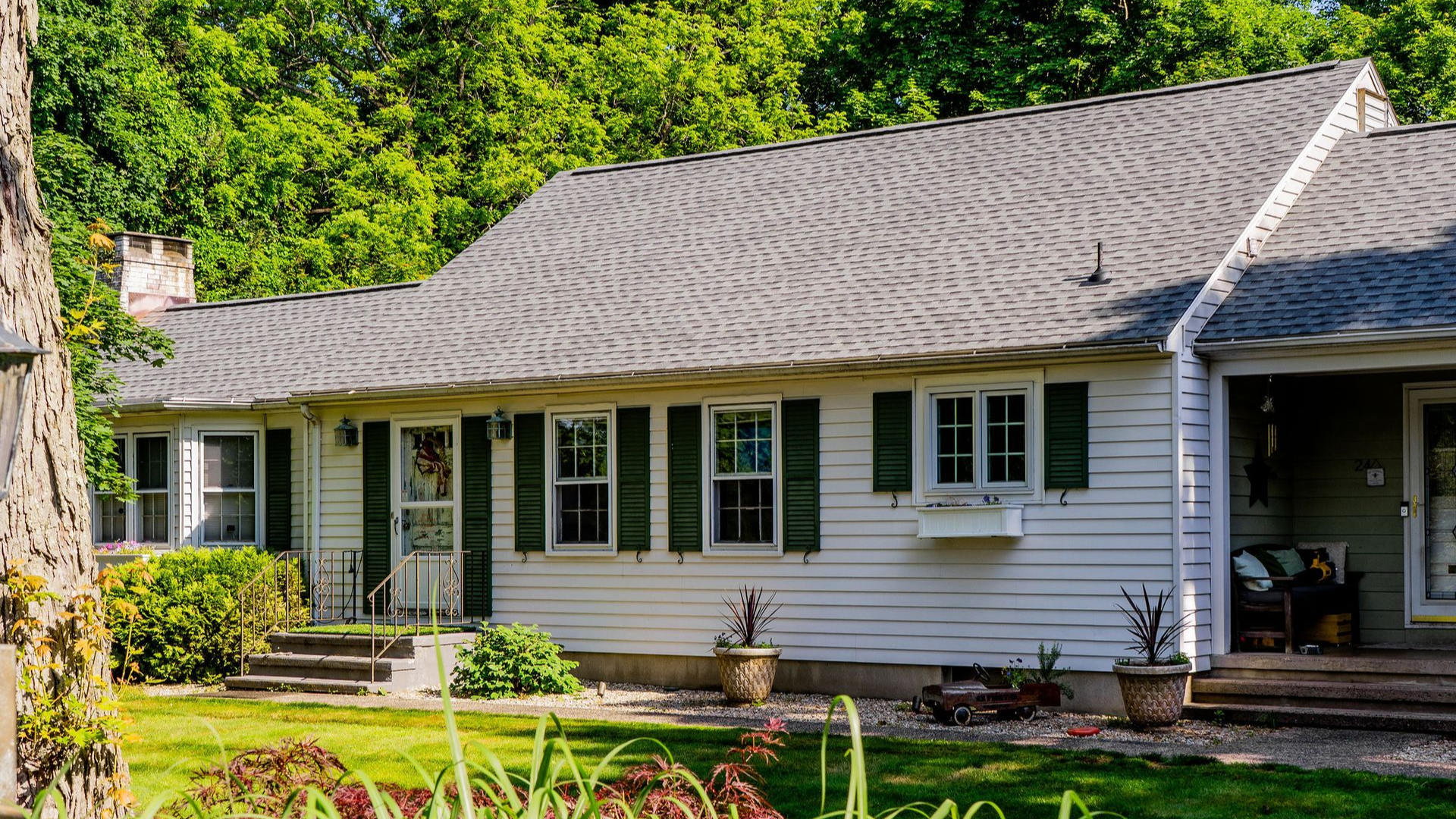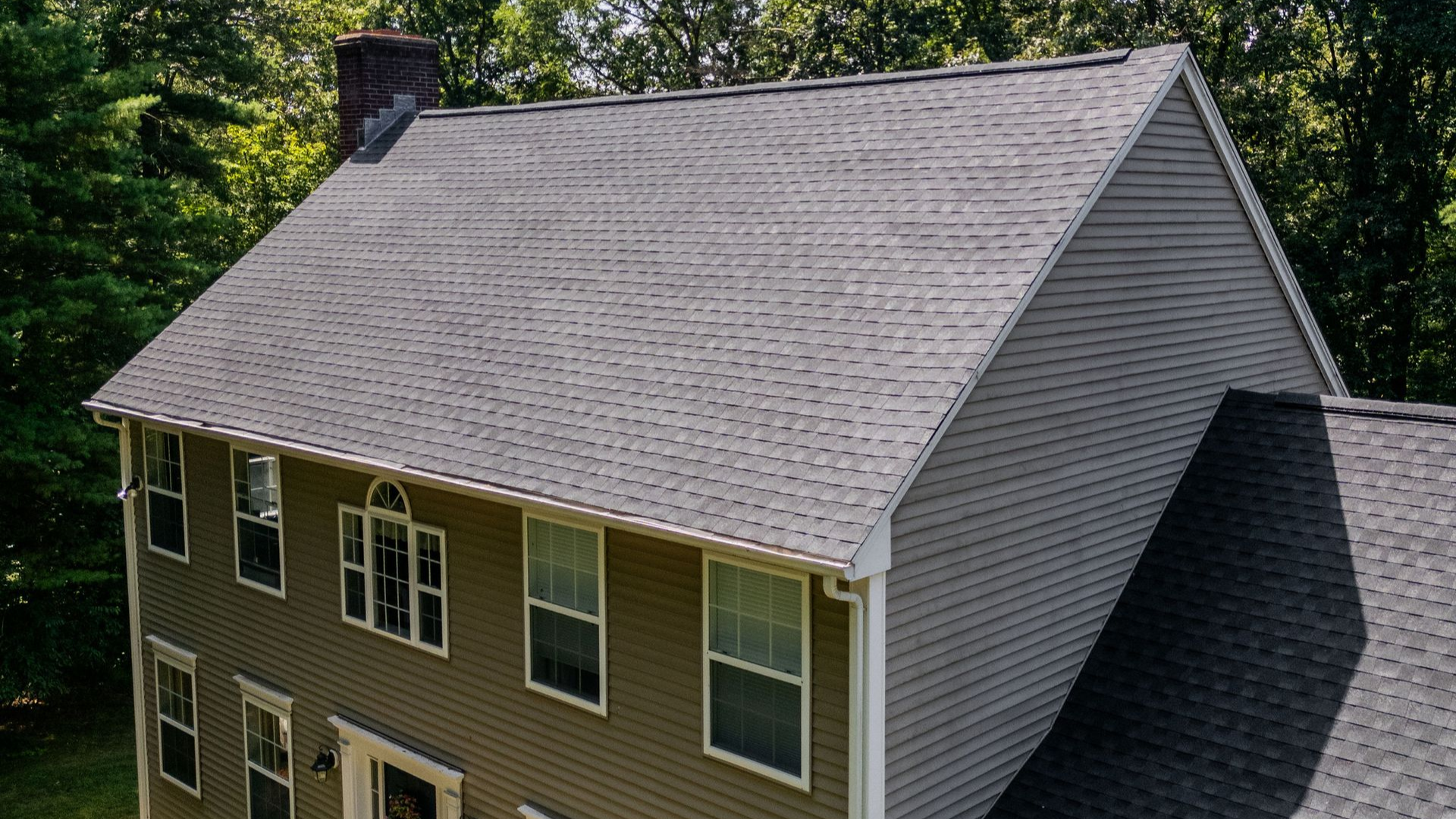Common Types of Roof Repairs and What Causes Them: A Homeowner’s Guide
September 25, 2025
Most roof repairs fall into a few clear buckets: shingle damage, flashing failures, roof leaks, gutter issues, ponding water on flat roofs, storm and wind damage, and ventilation problems. These problems are usually caused by weather, age, poor installation, or missed maintenance. At Artisan Roofing CT, we’ve inspected and repaired hundreds of roofs across Connecticut, so we’ve seen these patterns up close. In this guide, we’ll show you the warning signs to watch for, what usually causes the issue, and when to call a pro so you can protect your home and budget.
Introduction
Roof repairs are more common than most people think. New England weather swings sun, rain, hail, wind, ice put constant stress on roofing systems. Even a well-built roof experiences wear and tear over time. The good news: early detection and simple maintenance go a long way. Catching a loose shingle, a small flashing gap, or a clogged gutter now can prevent roof water damage, structural roof damage, and expensive emergency roof repair later.
What this guide covers
- Clear
roof damage signs any homeowner can spot
- The
common types of roof repairs and what causes each one
- When a DIY patch is risky vs. when to call a roofing professional
- Practical
roof maintenance tips to extend your roof’s life
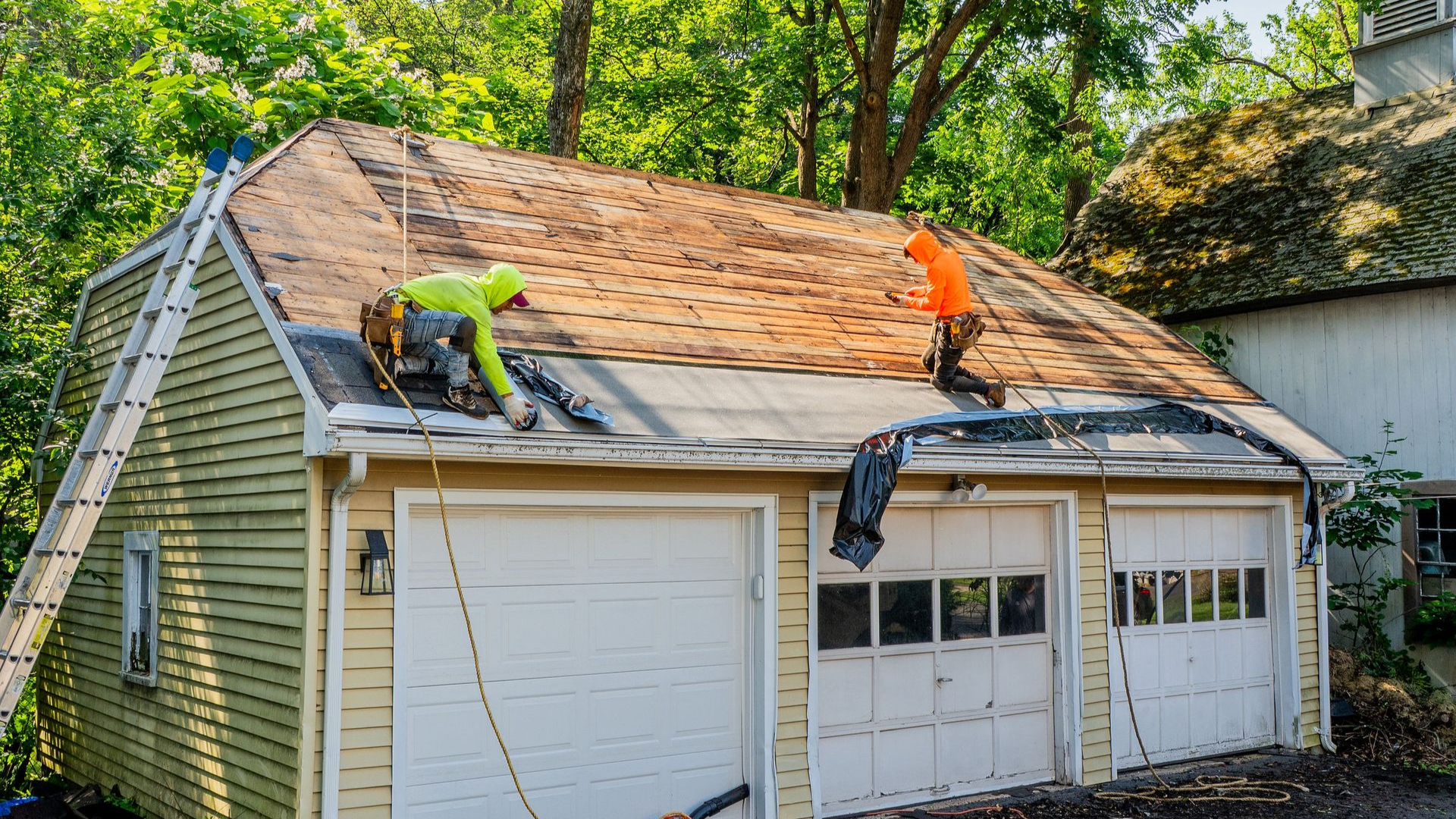
Signs Your Roof May Need Repairs
You don’t need to climb on your roof to notice most problems. A slow, careful walk-around and a quick look in the attic can tell you a lot.
- Leaks or water stains on ceilings
Brown rings, bubbling paint, or a musty smell point to an active or recent leak. - Missing, cracked, or curling shingles
Look for lifted edges, cracked surfaces, or patches where shingles are gone. These are common after wind damage roof events. - Granules in gutters or around downspouts
Asphalt shingles shed protective granules as they age. A handful of granules after a storm can signal accelerated roofing wear and tear. - Sagging or uneven rooflines
Any dip or wave in the ridge or field could mean deck rot or structural roof damage. This needs attention fast. - Mold, mildew, or moss growth
Moss holds moisture against shingles and can shorten their life. Roof moss removal helps, but you also need to improve ventilation or shade to prevent it returning.
If you see any of these roof damage signs, schedule a roof inspection. Small issues become big ones quickly.
Common Types of Roof Repairs
1) Shingle Damage
What causes it:
- Weather exposure (sun, freeze-thaw cycles, hail)
- Aging and general roofing wear and tear
- Poor installation or inadequate ventilation causing premature curling and cracking
Warning signs:
- Cracked shingles, curled corners, bald spots (lost granules), or
missing shingles
- Dark streaks (algae), or shiny spots where matting is exposed
- Leaks after wind-driven rain
Repair approach:
- Spot shingle replacement is common when only a few pieces are damaged.
- If many shingles are cracked or brittle, the roof may be at the end of its life consider a full replacement.
- Always check the underlayment; if it’s torn or saturated, replace those sections too.
SEO tip for homeowners searching: If you’re looking up solutions, search phrases like shingle replacement, roof leak repair, or aging roof issues to find targeted help.
2) Flashing Failures
Flashing is thin metal (or sometimes a specialized membrane) that seals roof transitions places where leaks love to start.
What causes it:
- Improper sealing or shortcuts during installation
- Corrosion, especially around chimneys
- Movement from storms or thermal expansion that breaks the seal
Common areas affected:
- Chimney flashing issues (a top source of leaks)
- Pipe boots and vent stacks
- Skylights and dormers
- Wall-to-roof intersections and step flashing
Warning signs:
- Water stains on ceilings or walls near chimneys or skylights
- Loose, bent, or rusted metal; cracked caulking; gaps at seams
- Drips that appear only during wind-driven rain
Repair approach:
- Flashing repair often means re-sealing or replacing the metal and underlayment at the transition.
- For chimneys, we typically install new step flashing and counter flashing, then re-point mortar if needed.
- Don’t rely on caulk alone. It’s a temporary band-aid and often fails under movement.
3) Gutter Issues
Gutters aren’t just about landscaping they protect your roof edge, fascia, and foundation.
What causes it:
- Clogged gutters from leaves and debris
- Sagging or disconnected sections
- Improper slope that allows standing water
How gutter problems affect the roof:
- Water backs up under shingles, causing roof water damage and ice dams in winter
- Rot in fascia boards and soffits
- Overflow that stains siding and floods foundations
Repair approach:
- Clean and flush gutters; check slope and rehang as needed
- Seal or replace leaking joints and corners
- Add larger downspouts or gutter guards if debris is a constant issue
4) Roof Leaks
“Leak” is the symptom; the cause may be shingles, flashing, vents, nails, or even condensation from poor ventilation.
What causes it:
- Punctures from fallen limbs or wind-driven debris
- Broken flashing or worn shingles
- Nail pops or fastener failure
- Condensation from poor ventilation that drips like a leak
How to trace and (carefully) temporarily seal a leak:
- In the attic, follow the stain uphill to find the entry point. Look for wet wood, rusty nails, or daylight.
- Place a bucket and protect insulation while waiting for repairs.
- Temporary patches (like a roof patch membrane) can help in dry weather, but climbing on a wet or steep roof is dangerous when in doubt, call for emergency roof repair.
Repair approach:
- Fix the root cause: replace damaged shingles, re-seat or reseal flashing, and address any underlayment or deck damage.
- If condensation is the culprit, improve ventilation and insulation rather than just sealing.
5) Ponding Water on Flat Roofs
Common on low-slope or flat roof systems (EPDM, TPO, modified bitumen).
What causes it:
- Poor drainage, clogged scuppers, or a sagging substrate
- Compressed insulation from foot traffic or heavy equipment
- Inadequate slope to begin with
Risks and long-term damage:
- Accelerated membrane wear, seam failure, and leaks
- Added weight on the structure
- Algae and plant growth
Repair approach:
- Clear drains and scuppers; inspect and re-seal seams
- Install tapered insulation to build slope toward drains
- For persistent issues, redesign drainage or resurface with a system rated for ponding
If you’re searching for help, “flat roof problems” and “ponding water repair” are good starting terms.
6) Storm and Wind Damage
New England storms can rip shingles, bend flashing, and drive rain under laps.
What causes it:
- High winds lifting shingles and tearing seal strips
- Hail bruising shingles and knocking off granules
- Flying debris causing punctures and broken roof tiles (on tile roofs)
- Tree limbs scraping and gouging the roof
Typical signs after a storm:
- Missing shingles or tabs bent back
- Piles of granules at downspouts (hail damage roof clue)
- Dented metal vents or gutters
- Fresh leaks or ceiling stains
What to do:
- Take photos from the ground for insurance.
- Schedule a professional
roof inspection to document
storm damage roof issues.
- Make safe temporary covers if needed (tarping), and keep receipts for claim documentation.
7) Ventilation and Moisture Problems
Your roof and attic need to breathe. Without balanced intake and exhaust, heat and moisture build up.
What causes it:
- Blocked soffit vents (painted shut or clogged with insulation)
- Inadequate ridge or box vents
- Bathroom or dryer vents dumping moist air into the attic
How this leads to damage:
- Trapped heat “bakes” shingles from beneath, causing early failure
- Moisture condenses on cold surfaces, leading to mold, rot, and a musty attic
- Ice dams form more easily in winter when attic heat melts roof snow
Repair approach:
- Open up soffit intake and add or improve ridge exhaust to balance airflow
- Vent bath and dryer fans to the exterior
- Add baffles to keep insulation from blocking soffit vents
What Causes Most Roof Damage?
- Natural aging and wear
UV, temperature swings, and normal weather slowly break down materials. - Severe weather events
Wind, hail, heavy rain, ice, and fallen limbs are major triggers for emergency roof repair. - Lack of maintenance
Small issues loose flashing, nail pops, clogging become big problems when ignored. - Poor installation or materials
Shortcuts at valleys, walls, and penetrations often show up years later as leaks. - Tree limbs and falling debris
Branches scrape granules off shingles and can puncture membranes.
When to Call a Roofing Professional
Some tasks are safe for handy homeowners cleaning gutters, checking from the ground, or raking light moss. But many repairs are not DIY-friendly.
Why some issues can’t be safely DIY’d:
- Working at height is risky, especially on steep or wet surfaces
- Leaks are tricky; a visible drip may be 10 feet from the actual entry point
- Incorrect repairs can void warranties or trap moisture
How a professional inspection helps:
- Finds hidden problems (like soft decking) before they spread
- Documents
wind damage roof and
hail damage roof for insurance
- Recommends targeted fixes instead of guesswork
Tips for choosing a qualified roofer:
- Local, established company with strong reviews and real references
- Licensed and insured for your town or county
- Detailed, written estimate that explains materials, scope, and cleanup
- Clear
warranty on labor and materials
- Good communication answers your questions and explains options
Preventative Roof Maintenance Tips
Small habits now can save you thousands later. Use this seasonal checklist to reduce seasonal roof damage and extend roof life.
Every Spring and Fall
- Walk the property and look up: scan for
missing shingles, lifted edges, or a
sagging roof line
- Clean gutters and downspouts; confirm water flows freely
- Trim back overhanging branches to prevent scraping and debris
- Check seals around chimneys, vents, and skylights for cracks or gaps
After Major Storms
- From the ground, look for new damage or debris on the roof
- Check attics and ceilings for new stains or musty odors
- If you suspect damage, schedule a
roof inspection fast action prevents
roof water damage
Winter Prep (Connecticut-specific)
- Clear gutters before freeze; ice dams love clogged gutters
- Ensure attic insulation and ventilation are balanced to reduce heat loss and ice damming
- Use a roof rake to safely remove heavy snow near eaves (from the ground)
Surface Care
- For light moss or algae, use a gentle, roof-safe cleaner and low-pressure rinse; avoid pressure washing
- Consider zinc or copper strips near the ridge to discourage growth
Address Minor Issues Early
- Replace individual damaged shingles quickly
- Re-seat or replace loose flashing don’t rely on caulk alone
- Fix
clogged gutters and adjust slopes so water leaves the roof fast
Quick Reference: Problem → Likely Cause → First Step
- Ceiling stain after wind-driven rain → Flashing gap at chimney or wall → Schedule flashing inspection and repair
- Granules in gutters → Aging shingles or hail impact → Evaluate for
shingle replacement or roof aging assessment
- Drip around vent pipe → Cracked boot or failed seal → Replace the boot and re-seal flashing
- Water pooling on flat roof → Poor drainage or sagging substrate → Clear drains; assess slope; consider tapered insulation
- Musty attic, winter ice dams →
Poor ventilation and warm attic air → Add balanced intake/exhaust, seal attic bypasses
- Leaks after branch fall → Punctured shingles or membrane → Temporary cover; schedule emergency roof repair
Conclusion
Key takeaways:
- Most roof issues start small: a lifted shingle, a loose piece of flashing, or a clogged gutter.
- The biggest causes are
weather, age, poor installation, and lack of maintenance.
- Early detection and routine care prevent costly damage and extend roof life.
Next step:
If you’ve noticed any of the roof damage signs in this guide or if it’s been a while since your last roof inspection we’re here to help. At Artisan Roofing CT, our local team can evaluate your roof, explain your options in plain language, and handle everything from flashing repair to shingle replacement to storm damage roof restoration.
Schedule an inspection today and get a clear plan to protect your home before minor issues become major repairs.
Frequently Asked Question's
How long should an asphalt shingle roof last?
Typically 15–30 years, depending on shingle quality, ventilation, and maintenance. Severe weather can shorten that range.
Do I need a full replacement if I have a few leaks?
Not always. Targeted roof leak repair can solve many issues if the rest of the roof is in good shape. If leaks are widespread or shingles are brittle, a replacement may be smarter.
What if I have a tile or metal roof?
The same principles apply for broken roof tiles, loose fasteners, and flashing problems. These materials last longer, but connections and transitions still need care.
Can clogged gutters really cause roof leaks?
Yes. Water can back up under the shingle edge, rot fascia, and overflow into the house. Keep gutters clean and pitched.
Is moss always a problem?
A little growth isn’t an emergency, but moss traps moisture. Over time, it can lift shingles and speed up failure. Roof moss removal plus better sun/airflow helps.

